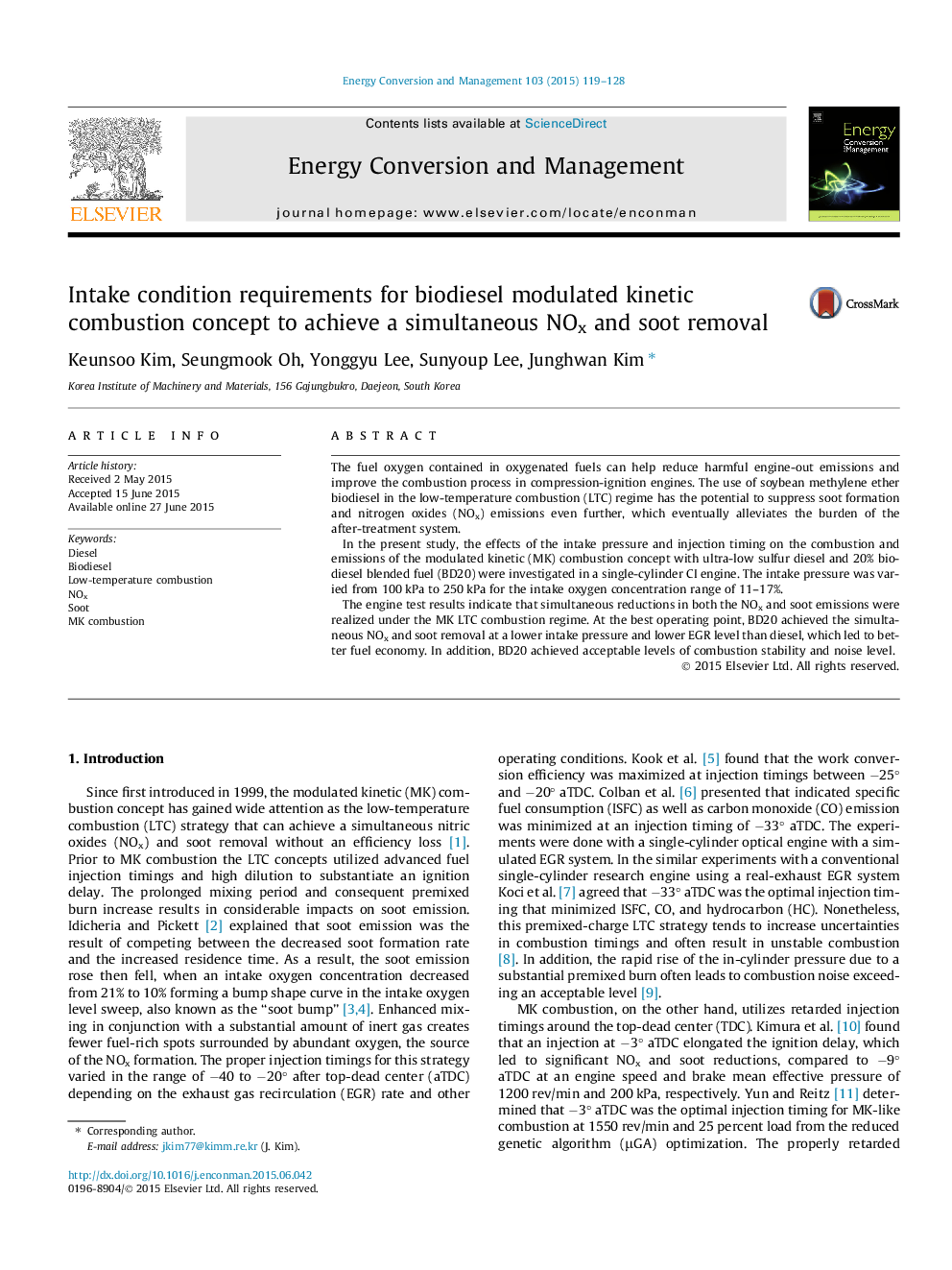| Article ID | Journal | Published Year | Pages | File Type |
|---|---|---|---|---|
| 771727 | Energy Conversion and Management | 2015 | 10 Pages |
•MK LTC combustion was investigated under various intake conditions.•BD20 MK combustion achieved NOx and soot removal at achievable intake conditions.•The BD20 best point showed lower ISFC and COVIMEP than the diesel best point.•Higher intake pressure showed higher efficiency at all intake oxygen concentrations.•Simultaneous NOx and soot removal required 200 kPa intake pressure at a medium load.
The fuel oxygen contained in oxygenated fuels can help reduce harmful engine-out emissions and improve the combustion process in compression-ignition engines. The use of soybean methylene ether biodiesel in the low-temperature combustion (LTC) regime has the potential to suppress soot formation and nitrogen oxides (NOx) emissions even further, which eventually alleviates the burden of the after-treatment system.In the present study, the effects of the intake pressure and injection timing on the combustion and emissions of the modulated kinetic (MK) combustion concept with ultra-low sulfur diesel and 20% biodiesel blended fuel (BD20) were investigated in a single-cylinder CI engine. The intake pressure was varied from 100 kPa to 250 kPa for the intake oxygen concentration range of 11–17%.The engine test results indicate that simultaneous reductions in both the NOx and soot emissions were realized under the MK LTC combustion regime. At the best operating point, BD20 achieved the simultaneous NOx and soot removal at a lower intake pressure and lower EGR level than diesel, which led to better fuel economy. In addition, BD20 achieved acceptable levels of combustion stability and noise level.
